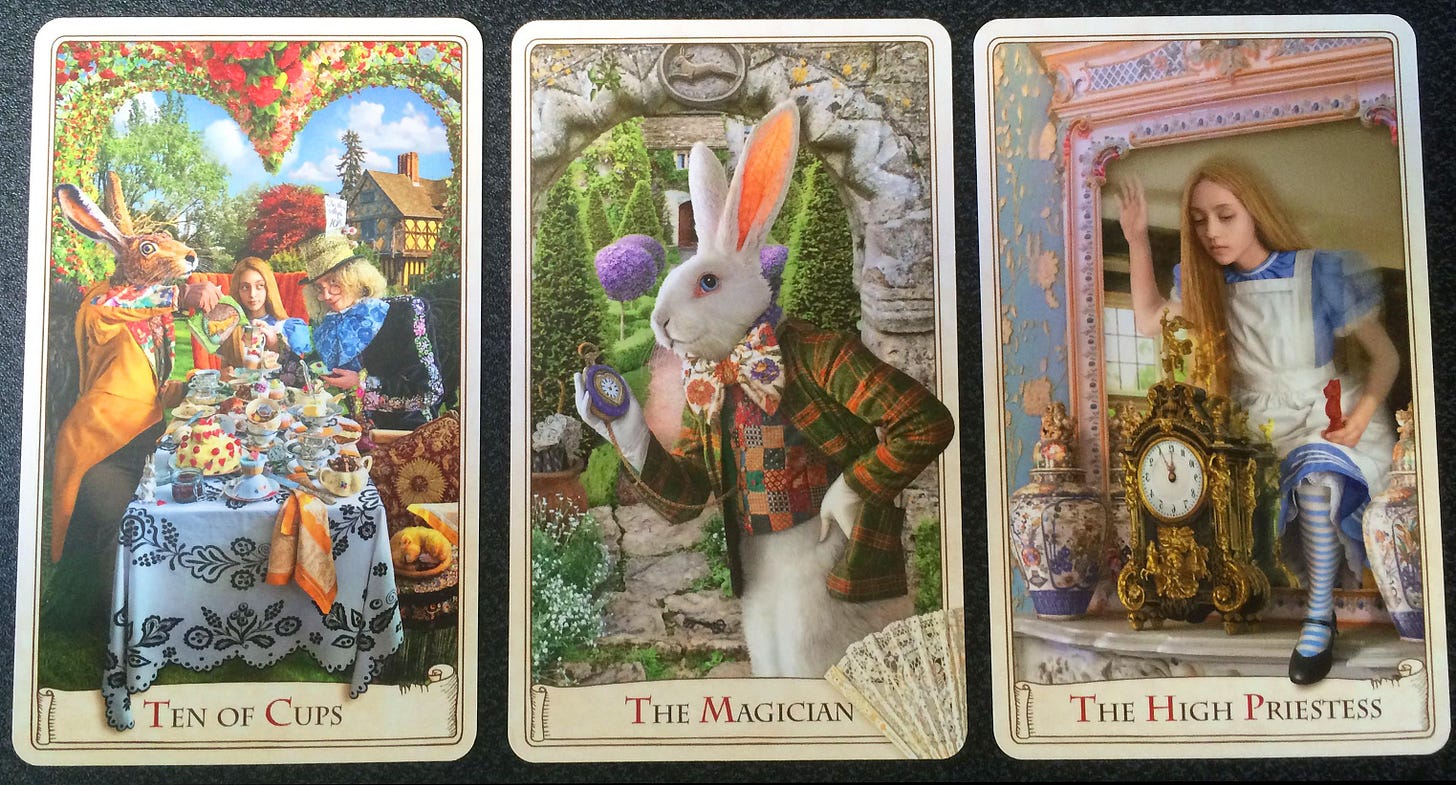Long before I wrote Ancestral Grimoire, I kept
a digital Book of Shadows that included
astrology lessons
insights into my chart
tidbits about ancestors
numerology ah-has
tarot spreads
moon cycles
journal notes
readings for myself
tarot timing
lenormand meanings
Some of what was in my BOS made its way into Ancestral Grimoire, but most stays just with me, as yours will stay with you.
If you’re wondering if a Book of Shadows and a grimoire are the same thing, they almost are, at least for me. Traditionally, though . . .
A Book of Shadows is personal and subjective, often containing reflections, spiritual philosophy, and records of personal experiences. It’s like a magical diary.
A Grimoire is more of a formal reference book, often focused on knowledge and techniques, such as spells, rituals, and correspondences, with less personal content.
I, like many practitioners combine elements of both into one book; that approach works for me. Let me show you what goes in mine, and then how to create a Book of your own.
Basic Characteristics of a Book of Shadows
1. A Sacred Space for Knowledge
A BOS is often considered a sacred object, reflecting the deep connection between the you (the practitioner) and your spiritual or magical practice. It’s a living document that grows and evolves as you grow and evolve. Knowing that this is a book/document that’s always enlarging will help you decide on its format.
2. Highly Personal and Customizable
There is no "one-size-fits-all" for a Book of Shadows. While some follow traditional structures or templates, others take a freeform approach like I do. Your BOS is uniquely yours, and it can include anything that resonates with your spiritual or magical practice. It is a reflection of your path, your creativity, and your personal connection to Spirit and magick.
3. A Practical Tool
The BOS is not just a journal for musings; it’s also a practical tool for magical and spiritual work. It’s a place to keep track of cycles, meaningful oracle draws, spells you’ve created or found online, or a resource for remembering correspondences (e.g., the meanings of herbs, crystals, colors, or moon phases).
It can also serve as a record of results. I particularly like keeping tarot readings I’ve done for myself. Because my journal is digital, I can easily snap a pic of the cards, then insert it into my document.
What Does a Book of Shadows Contain?
The content of a BOS can vary greatly depending on your path, interests, and focus. Because I do a lot of ancestral work, my Book includes things I’ve learned about ancestors, or photos I’ve found online of places they lived. The Book is always meant to reflect your unique journey. Here are some common elements often included:
Rituals and Spells: Instructions for rituals, ceremonies, and spellwork, including tools needed, steps to follow, and intentions behind the actions. Then, keep track of results.
Magical Correspondences: Lists of associations for magical work, such as the properties of herbs, crystals, colors, and planetary influences. This could take many forms, such as knowing which planet is associated with which Major Arcana in tarot, or which color suits your Sun sign.
Divination: Notes on tarot spreads, pendulum readings, astrology charts, or dream interpretations. I save TONS of spreads, both my own and those of other people. I also save the web address (URL) where I find the spread; that way I can be sure to acknowledge the spread’s creator.
Deities and Spirits: Information about gods, goddesses, ancestors, or spiritual guides you work with, including offerings or invocations.
Seasonal Celebrations: Rituals or notes on Sabbats or other holidays and observances tied to the Wheel of the Year. I like giving myself a six week goal at each Sabbat, decide on steps to take to meet the goal, and then track my progress.
Personal Reflections: Journaling about your spiritual growth, lessons learned, and experiences in your practice.
Plants You’re Studying: Press leaves or flowers then note what they mean to you as well as their traditional usage.
Symbols and Sigils: Drawings or records of symbols, sigils, or runes you’ve created or found meaningful.
Divine Inspiration: Poetry, chants, prayers, or affirmations that inspire and uplift you. Divination-inspired poetry is a joy, at least for me.
Lessons and Research: Information from books, workshops, or mentors, along with your interpretations or applications of these teachings.

Now, Let’s Create Your Own Book of Shadows
Step 1: Choose Your Format
Decide what kind of Book of Shadows you want to create. There’s no right or wrong choice, so pick the format that works best for you.
Physical Book: A journal, notebook, or a binder are popular choices. Binders are particularly useful if you want to rearrange or add pages as you go. Honestly, if my handwriting wasn’t so unreadable, I’d opt for a big leather journal.
Digital Book: Use tools like Google Docs, Word, Pages, or a private blog to create a digital BOS. This format is searchable, shareable, and easy to organize. I use a Word doc so I can create a Table of Contents, which allows me to keep everything in sections.
Step 2: Organize Your Layout
Decide how you want to structure your BOS. While you can write everything in chronological order, mine is in sections. I’m a Virgo.
Use tabs, bookmarks, or color-coded sections for easy navigation, especially if you’re using a binder or notebook.
Step 3: Start Writing
Begin with what you know or feel drawn to. For example, you could write about your first ritual, a favorite spell, or correspondences for herbs you’ve worked with. If you’re drawn to kitchen witchery, how about a spell for morning coffee?
Document your experiences. If you perform a ritual or cast a spell, record what you did, how you felt, and the results. This helps you track your progress and learn from your practice.
Save rituals, spells, or spreads you’ve found online. If you perform or use any of them, track results.
Step 4: Decorate and Personalize
Art: Include hand-drawn illustrations, sigils, or symbols. Don’t forget to note how well your sigil worked.
Nature: Press flowers, leaves, or herbs to include in your book. When I visit historic places where Spirits dwell, if there’s a leaf on the ground, I ask permission to take it, then press it in a separate journal where I keep pressed flowers and leaves.
Aesthetics: Use stickers, washi tape, or decorative borders to make your BOS visually appealing.
Handwriting: Experiment with calligraphy or decorative fonts for headings. If you’re not artistically inclined, you can print images or find inspiration online to incorporate into your BOS.
Step 5: Continue Adding and Evolving
Add new sections as your interests shift or expand.
Revise or refine old entries as your understanding deepens. I’ve gone back and re-designed tarot spreads, for example.
Use it as a record of your progress, a tool for study, and a source of inspiration.
Don’t be afraid to make mistakes or cross things out—it’s all part of the process.
Your Book of Shadows is your personal guide, your record, and your space to grow. Keep it how you like, add to it when inspired, and let it evolve with you. It’s your journey—make it your own.
xo
Nancy









So love this! I’m developing a project for any community members that want to join and learn and having these ideas in 1 place will be vital for remembering what I’ve learned in my life. Timing is perfect for me!